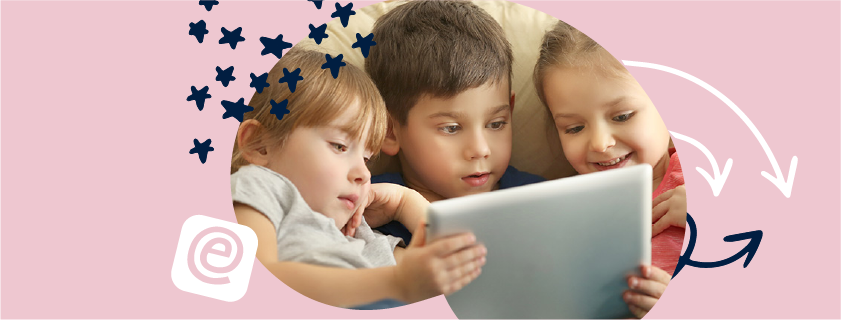Supporting reading at nursery (Age 3-4)
If you have a nursery-aged child, you probably spend lots of time singing nursery rhymes with them, as well as playing games, chatting and telling stories. You’re already getting your child ready for reading!
These activities help your child to hear different sounds, understand what a story is, join in with phrases and increase their vocabulary. Your child will continue doing all these activities in their nursery setting and they might also start making links between basics sounds and the letters.
Use these activities to carry on supporting your child:
Read and talk about books
Have fun reading to your child every day. It is amazing how busy life can get with a three-year-old, but try and read as much as you can. It will help every aspect of their reading skills later – vocabulary, story structure and grammar to name a few.
When you and your child are snuggled down with a book, look at the cover together before you launch into the story. Talk about the title and point out any characters in the illustration.
Ponder out loud about the story, or ask ‘how’ and ‘why’ questions:
I wonder what this story is going to be about.
Who do you think will be the main character?
How did the bear get across the river?
Why was the fox cross?
These questions will help to set the scene for your child as well as engage them in the story. It will also start them on the road to comprehension!
Listen to (and sing!) songs and rhymes
Singing songs and nursery rhymes helps your child to hear the sounds in words and build up a bank of favourites. Sing them at bath time, when doing the washing up or doing a jigsaw. Don’t worry – enthusiasm is better than a beautiful voice. Play with words and sounds and make up your own nonsense rhymes too. Be brave and be silly! Encourage your child to join in.
Read and tell traditional tales
Read or tell well-known tales to your child or listen to them in the car or when tidying up. Try making up your own versions using the names of your child and their friends. Ask your child to help you remember what happens next, or to join in with repeated phrases, such as Run, run, as fast as you can! You can’t catch me, I’m the gingerbread man!
Play word games
If you play ‘I spy’ when you are out and about you are helping your child to hear the starting sound of a word. Try to use the starting sound (rather than the letter name), so say: ‘I spy with my little eye something beginning with mmmm.’ Other rhyming games will help to focus on the end sounds, for example you could say: ‘I went to the shops to buy a cat.’ Together try and think of a word that rhymes with cat and add it to the list: ‘I went to the shops to buy a cat and a mat.’ Carry on for as long as you can think of rhymes.
Free eBook Library
Find hundreds of free stories and resources to help your 3-4-year-old discover the joy of reading in our free eBook library. Take a look >

